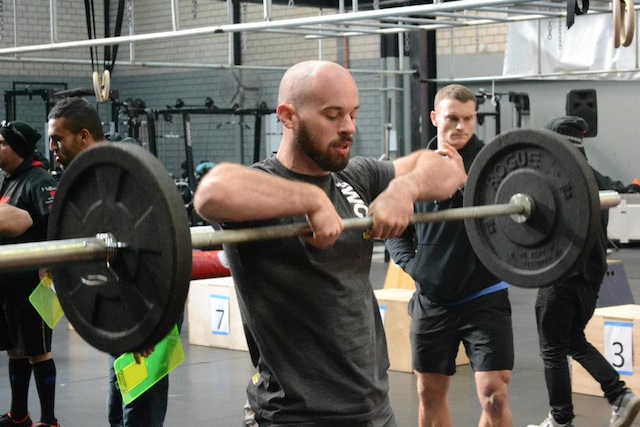
Training at CrossFit RXD
“Duh, RX the workout or what’s the point, right?”
“We’re talking about intensity, right?!?”
“You can’t be intense unless you’re totally RX’d!!!!”
Ok, settle down. Not quite. Yes intensity is the best way to achieve results, but we need to consider when, what kind, and how much intensity should be dosed into our workouts.
You can make adjustments in weight, reps, time, distance, skill, and implement to not only challenge yourself but also make you a better all-around athlete. Completing workouts with poor (sometimes awful) form can risk injury, or at best prevent you from reaching peak athletic performance.
We all have weaknesses and areas that need improvement. It’s ok to get those movements correct first and gradually build strength both bodily and mentally. Sometimes this may require scaling in one or more modal domains. Taking the time to practice good mechanics first before ramping up the intensity and training workouts prescribed will payoff in the long run.
When deciding on whether to perform a workout as prescribed or not, there are various pieces to consider. First off I tell my athletes to consider what the intent of the day is, meaning: why are you training today and what are you goals?
If the intention is to build strength and go heavy, then you must consider your proficiency with the movement. Will you at some point in this workout compromise your form to the point of risking injury? Can your form be preserved by doing less repetitions or rounds? Can you maintain technique if the weight is slightly lighter?

Dave Buckley of IWCF and Chad Mackay of CrossFit Active
Will this combination of a heavy load and your shakey technique possibly result in injury? If that is the case, then you need to adjust the exercise for that day. In each of these scenarios we are working with the goal of preserving the intent of the day; in this case: lifting heavy weights. We are not just scaling without guidance.
Now consider if the intent is to move quickly through the movements for the cardiovascular response or that “sweet CrossFit metcon burn.” How do you preserve that stimulus? Well, think of what movements might slow you down to the point of stopping due to a weakness or level of difficulty?
If you repeatedly slow down so much that you no longer reach that point of cardiovascular fatigue then you are missing the point of your training session. You might need to make an adjustment to a difficult movement and scale it down. Likewise, you may need to adjust the time domain in which you are working, or play with weights, reps and rounds to find something you can hit hard and fast with minimal rest.
On days where you are working a more complex, high skill movement whether it be gymnastics (perhaps ring muscle-ups?) or weightlifting (say, the snatch?) or even a monostructural movement you may struggle with (double-unders anyone?) you still need to take into account your goal of the workout.
Some days you are meant to fight through every single missed double under and count each attempt as a rep before moving on to the next exercise. Maybe you need to slow down and break the movement into pieces like with a barbell snatch (high hang snatch, hang snatch, full snatch) in order to find your rhythm.
There may be pauses in the workout to analyze technique and understand where you are missing. Using this as a period of learning and improving instead of just rushing through to finish at a pace you might see posted on CrossFit.com could help you advance as an athlete and reach a place of proficiency in movement you never thought possible.

Michael & Emma at CrossFit RXD
When looking at how to adjust movements, I think the kipping pull-up is a perfect example of how I scale differently for my athletes depending on what the intent of the day is. On days I want them to build strength in this movement (say, if there aren’t too many reps), I will have them do ring rows with their feet up on a box and no hip swinging.
If I want them to keep moving fast and not rest I will bring in a jumping pull-up. And if I want to focus on skill development, I will ask them to substitute with a basic kip swing without the pull. In each modification there are defined standards and the reason for modifying is explained to the athlete.
I don’t want them confusing the goal of the workout and bringing in slow negatives after each jumping pull-up, or trying to pull, out of sequence) on a kip swing when they should just be practicing their technique.
If at all possible, let your coach be your guide when deciding what your goal is for the day of training. Bounce ideas off of training partners before 3-2-1-GO.
You may have a group of athletes performing the same workout, but each individual has a unique version of the workout depending on what their intent of the day is as decided by the coach.
Not all athletes are the same and not every training day should look and feel the same. Define your daily goals and realize where you can make yourself better by taking the power away from the “as RX’d” and taking control of your training.

















Follow Us